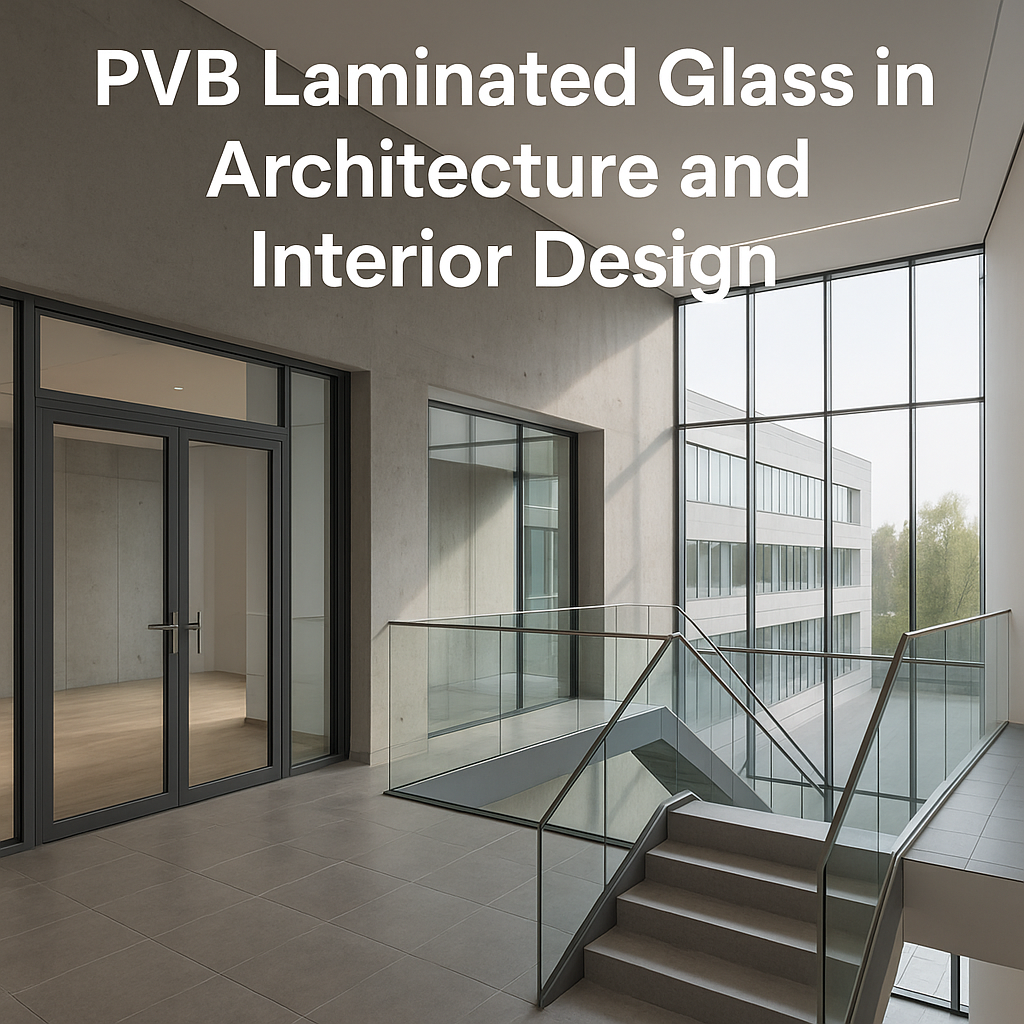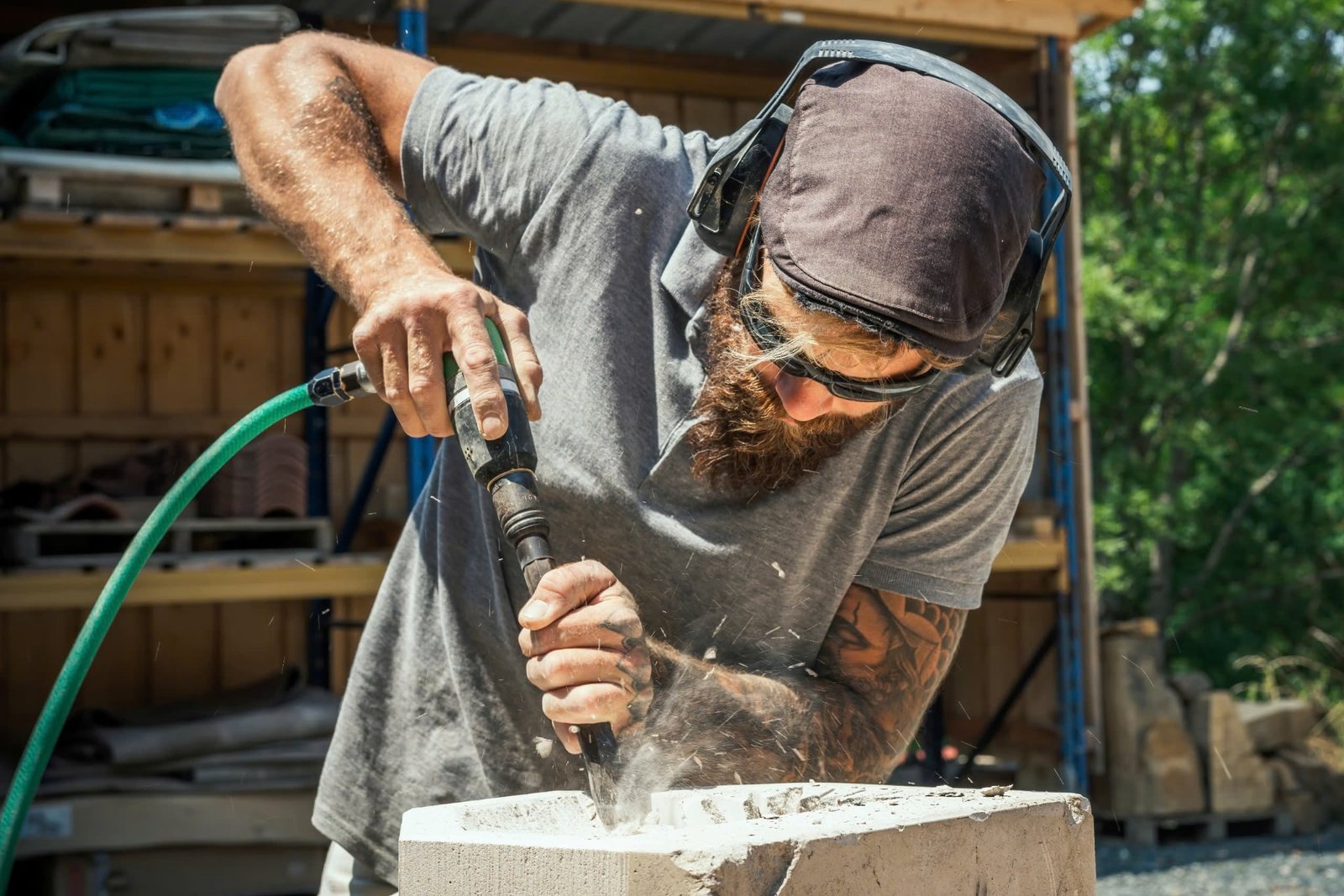
PVB laminated glass is an essential material in modern architecture, interior design, thanks to its combination of safety, functionality, aesthetic versatility.
PVB laminated glass is an essential material in modern architecture and interior design, thanks to its combination of safety, functionality, and aesthetic versatility. It offers a clear advantage over traditional glazing options due to its layered composition and safety-enhancing interlayer. Whether used in high-rise façades or minimalistic interiors, PVB laminated glass allows architects and designers to meet both structural demands and visual aspirations. This article explores how PVB laminated glass contributes to innovative building and interior design, the advantages it offers, how it compares with alternatives like SGP laminated glass, and what to consider when selecting and maintaining this high-performance material.
What is PVB Laminated Glass and Why Is It Important in Design?
PVB laminated glass is made by bonding two or more layers of glass with a polyvinyl butyral (PVB) interlayer under heat and pressure. This interlayer acts as a binding agent and safety barrier, holding the glass together when shattered. The result is a type of laminated glass that doesn’t scatter into dangerous shards, making it highly suitable for environments where safety and durability are critical.
What sets PVB laminated glass apart is its ability to offer both strength and flexibility. While it complies with strict safety regulations, it also enables creative freedom in architectural and interior design. Its transparency, color options, and ability to incorporate patterns or embedded materials make it a favorite among designers looking to balance form and function.
To explore a comprehensive overview of the material, visit PVB Laminated Glass: Everything You Need to Know.
Applications of PVB Laminated Glass in Architecture
In architectural projects, PVB laminated glass is used in a wide range of structural and decorative applications. It meets performance standards for load-bearing installations while also contributing to energy efficiency and visual appeal. Common applications include:
- Glass façades and curtain walls
- Skylights and overhead glazing
- Balconies and balustrades
- Canopies and bridges
- Structural glass walls and partitions
One of the major reasons PVB laminated glass is so popular in architecture is its ability to provide safety glass compliance without compromising aesthetics. In façade systems, it maintains transparency and light transmission while resisting impact, UV rays, and noise.
Architects can also integrate this material with other technologies such as low-emissivity coatings, photochromic layers, or digital prints for enhanced performance and appearance.
PVB Laminated Glass in Interior Design
Interior designers value PVB laminated glass not only for its safety but also for its decorative possibilities. It is used to create partitions, glass staircases, frameless doors, and feature walls. PVB interlayers can be manufactured in a wide spectrum of colors and can be layered to create subtle or vibrant hues. Some designers even use printed or textured interlayers for a bespoke effect.
In residential settings, it is ideal for shower enclosures, kitchen backsplashes, and custom furnishings. In commercial interiors, it contributes to open, light-filled workspaces while still offering acoustic insulation and privacy.
With the proper use of interlayer combinations, PVB laminated glass can also filter UV rays and reduce solar heat gain, making it a smart choice for both aesthetic and energy-efficient interiors.
How PVB Laminated Glass Enhances Safety
PVB laminated glass plays a significant role in improving building and occupant safety. Upon impact, the glass may crack but remains adhered to the PVB layer, preventing sharp fragments from causing harm. This is critical in locations such as schools, hospitals, airports, and offices where pedestrian safety is paramount.
Additionally, PVB laminated glass enhances building security. It delays forced entry attempts and resists vandalism better than standard glazing. In the event of natural disasters like hurricanes or earthquakes, laminated glass maintains its integrity longer than annealed or tempered glass alone.
For a more technical view of how it’s manufactured to meet these high safety standards, check How is PVB Laminated Glass Made?.
Acoustic and Environmental Benefits in Architecture
Another reason PVB laminated glass is used widely in both exterior and interior applications is its sound insulation performance. The PVB interlayer dampens vibrations and reduces transmission of airborne noise. This makes it especially useful in urban architecture, hospitality projects, and educational facilities.
From an environmental standpoint, PVB laminated glass can be used in double- or triple-glazed systems to enhance insulation, reduce heating and cooling loads, and contribute to green building certifications like LEED. When combined with solar control coatings, it further improves energy efficiency.
PVB Laminated Glass vs. SGP Laminated Glass in Design
While PVB laminated glass is suitable for most standard architectural applications, certain projects may require the enhanced performance of SGP laminated glass. SGP (SentryGlas Plus) is significantly stiffer and more durable than PVB. It’s designed for structural glazing applications where minimal deflection and maximum post-breakage integrity are required, such as blast-resistant systems or unsupported cantilevered glass.
That said, SGP comes at a higher cost and offers less acoustic damping. For general design purposes where flexibility, sound control, and affordability matter most, PVB laminated glass remains the optimal solution.
For a detailed breakdown of differences, visit SGP vs PVB Laminated Glass: Key Differences Explained.
Considerations for PVB Laminated Glass Installation
Proper PVB laminated glass installation is essential for maximizing its performance and longevity. Glass professionals should take the following into account:
- Edge protection is crucial to prevent delamination caused by moisture exposure.
- Drainage systems and weep holes must be maintained in exterior applications.
- Compatible structural sealants and frames should be used to ensure longevity and compliance.
Installers must also adhere to load-bearing calculations and architectural standards when specifying laminated glass in structural applications like glass floors or balconies.
Maintaining and Caring for PVB Laminated Glass
With proper care, PVB laminated glass can retain its strength and clarity for decades. Key aspects of PVB laminated glass care include:
- Cleaning with non-abrasive, pH-neutral solutions
- Avoiding high-pressure washers, especially near exposed edges
- Inspecting for signs of edge delamination or discoloration
- Protecting edges from prolonged moisture or UV exposure
For both indoor and outdoor installations, scheduling periodic inspections ensures early detection of any performance issues. In high-traffic commercial buildings, maintenance programs should be integrated into facility management plans.
Cost Factors and Pricing Insights
The price of PVB laminated glass depends on multiple variables, including thickness, type of glass (annealed or tempered), size, and customization. On average, expect costs ranging from $20 to $60 per square foot. Colored interlayers, digital prints, and acoustic or fire-rated configurations can raise the price.
When budgeting, it’s important to also factor in installation, hardware, structural support systems, and long-term maintenance. Working with established PVB laminated glass manufacturers allows for better control over pricing and product quality.
Conclusion: Why PVB Laminated Glass Is a Design Game-Changer
PVB laminated glass has transformed the way architects and designers use glass in the built environment. It combines functionality, safety, and creative potential in one high-performance product. Whether used in a sweeping façade or a minimalist office divider, PVB laminated glass offers unmatched versatility.
It satisfies building codes, enhances acoustics, improves security, and supports sustainability goals. For most interior and architectural projects, PVB laminated glass offers the ideal balance of performance and cost-efficiency. When structural demands are higher, SGP laminated glass becomes a complementary option rather than a replacement.
Design professionals looking to integrate clarity, safety, and creativity into their work will find PVB laminated glass to be a reliable and rewarding material. For in-depth knowledge and technical specifications, revisit these essential resources:

